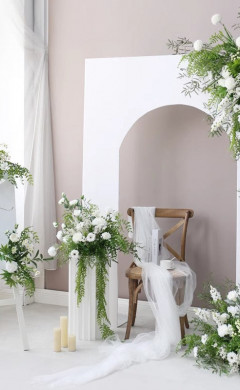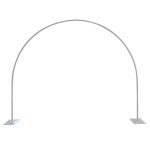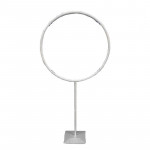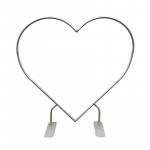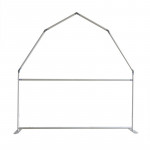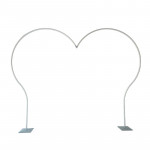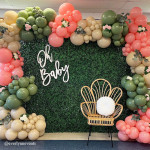DIY Wedding Flower Kits that Are On-Trend and Unbelievably Beautiful
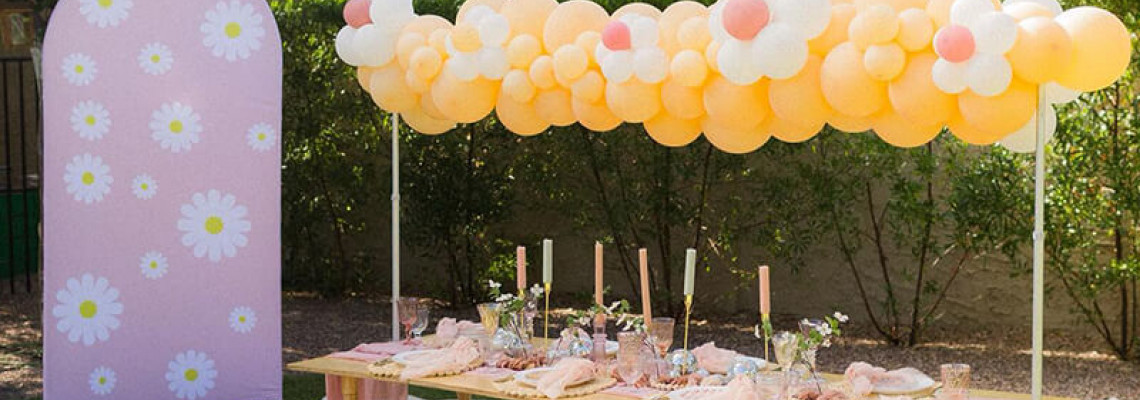
DIY Wedding Flower Kits that Are On-Trend and Unbelievably Beautiful
Do DIY wedding flower kits appeal to you as a creative bride who enjoys a good craft project? Or are you a bride who wants to make your wedding flowers to save money? You’ve come to the perfect location regardless of your floral knowledge or experience—or lack thereof. If you want to arrange your flowers for your wedding, this guide will help you succeed. Your guests will remember your stunning wedding bouquets forever!
Artificial flowers are frequently used instead of fresh flowers by brides who choose to make floral arrangements. Fresh flowers are fragrant, lovely, and fragile. They can be challenging to maintain, though. Some flowers can wilt at your wedding if you arrange them a day or two beforehand. In that case, someone must rush around to keep them hydrated and fresh. Do you want to endure all of that anxiety before your special day? Artificial flowers are the ideal substitute if not.
It’s important to remember that artificial flowers are not all made equally. Certain fabric flowers are inexpensive and won’t look good on a significant day like your wedding. Other high-quality artificial flowers, such as wood, silk, or dried flowers, will appear gorgeous and lifelike. Beautiful, silky silk creates realistic-looking silk flowers, including orchids, roses, hydrangeas, and more. Because they can be ordered in handy DIY bouquet kits and colored to match any color, wood flowers are also ideal for crafty brides.
Types of DIY Flower Arrangements
It would help if you perfected all of your wedding floral arrangements after reducing the number of artificial flower possibilities. It’s time to decide which DIY wedding flower kits you’ll need for your special day. Most brides want to have these classic floral arrangements during their weddings.
Bouquets
First, if you’re following floral tradition, you’ll need a couple of different kinds of bouquets for your wedding. For the bride, you’ll need a big, unusual bouquet. The bridesmaids will then get smaller bouquets comparable in style and hue. Additionally, your flower girls may have bouquets of pomanders that match. If you want your bouquets to all look well together, you can get artificial flowers in bulk. You’ll also save money since you’ll purchase all the materials for these bouquets.
Boutonnieres
You’ll then need to budget for a large number of boutonnieres. The boutonnieres that your groom and groomsmen wear must match. Traditionally, if they are still alive and present, the grandfathers and the bride and groom’s dads wear boutonnieres.
Corsages
Traditionally, corsages that complement the colors and flowers of the rest of the bridal party are given to the mother of the bride and the mother of the groom. Try creating an enormous corsage that spans half of the forearm and is fastened in two places if you adore the idea of a matching corsage but want something more unusual. This kind of corsage is quite chic and charming.
Centerpieces
For your wedding, you’ll also need some floral centerpieces. If you serve your guests during a luncheon or reception, a lovely centerpiece might adorn the tables where they will be seated. Floral centerpieces can be simple. They may be a large arrangement in a beautiful vase or a few bud vases with single flowers.
Garlands
A flower garland is another lovely floral arrangement for your wedding. The head table, where the bride and groom are seated at a luncheon or reception, is usually decorated with garlands. This post offers stylish suggestions for gorgeous wedding garlands if you need inspiration!
How to Create a DIY Wedding Bouquet
This easy DIY bridal bouquet tutorial will help you get started after you know what flowers you’ll need for your wedding. You can buy a do-it-yourself bridal flower kit to make beautiful bouquets for yourself and your bridesmaids. These procedures will also apply to the centerpiece arrangement, corsage, and boutonniere. While you're measuring and securing them, the final processes will differ slightly. Enjoy this DIY bouquet technique for the time being. Check out this page for more detailed instructions on creating a bridal bouquet!
1. Focal Flowers
Start by arranging your focus flowers first. The giant flowers in your arrangement are your focal blooms. They typically draw attention to some of your primary wedding colors that you want to make a big impression on your wedding day. Group your focal flowers together to spread out your colors and create an eye-catching arrangement.
2. Complementary Flowers
Next, assemble your bouquet by adding more minor, complementing flowers. Smaller flowers with complementary hues, such as chrysanthemums, are typically your complementing flowers. Incorporate these between and around your central flowers.
3. Floral Filler
Use floral filler to begin bridging the little spaces between your flowers. Tiny, textural flowers, like baby’s breath, are typically used as floral filler to give your arrangement some volume and variation.
4. Greenery
Lastly, try using some lovely, frothy greenery to frame your bouquet. You may add some variation to your arrangement by working smaller sprigs of foliage in the center. This might help your bouquet look polished and professional. You can utilize natural, fresh greenery, even using artificial flowers.
5. Finishing Touches
Use floral tape and rubber bands to secure your arrangement until you are satisfied that each flower and sprig is firmly in place. Depending on your aesthetic and personal flair, wrap the stems in lace, burlap, or ribbon to hide the rubber bands.
